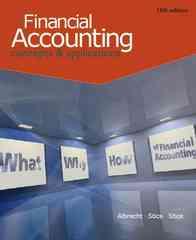Question
Chapter 12 Extra Problem International Company will translate (convert) the Korean subsidiary?s financial statements into dollars before preparing the consolidation. To do so they go
Chapter 12 Extra Problem International Company will translate (convert) the Korean subsidiary?s financial statements into dollars before preparing the consolidation. To do so they go thru a process where the Korean subsidiary?s financial statements are remeasured into the Korean subsidiary?s functional currency and then translated into dollars (the Parent Company?s reporting currency). Since the Korean subsidiary does most of its business in Yen (Japan) the functional currency is the Japanese Yen. In this problem the Korean subsidiary?s books are kept in South Korean Won. These amounts must be remeasured into the functional currency ? the Japanese Yen. This process uses the temporal method of translation. The temporal method calls for: ? Cash and accounts receivable are translated at the current rate. ? Inventory is translated at its historic cost. ? Cost of goods sold is translated at the historic cost of the inventory. ? Depreciation expense is translated at the historic cost of the building. ? Equity is translated at its historic rate The remeasurement process results in a foreign currency gain or loss that is applied to net income in the translation gain/loss. Once the Korean Won are remeasured into Japanese Yen they then must be translated ifrom the Japanese Yen into the reporting currency ? American Dollars. This conversion uses the current rate of to translate from the functional currency to the reporting currency. This results in a foreign currency adjustment. This adjustment gain or loss from translation is called a translation adjustment and is shown as other comprehensive income. Other comprehensive may be shown as a separate section of the income statement, a separate comprehensive income statement or part of retained earnings. The current rate method calls for: ? Assets and liabilities are translated at the current exchange rate; equity is translated at historical rates. ? Revenues and expenses which occur evenly throughout the period are translated at the average-for-the-period exchange rate. Income items, such as gains and losses, which are the result of a discrete event, are translated at the actual exchange rate on the date of occurrence. International Company (an American Company) owns a Korean subsidiary. The Korean subsidiary does most of its business in YEN (Japan). Convert the Korean subsidiary?s Financial Statements into the reporting currency. Korean Company Financial Statements For the Year Ending December 31,200X South Korean Won Rate Japanese Yen Rate American Dollar Income Statement Sales 100,000 Cost of Goods Sold (60,000) Operating Expenses (20,000) Depreciation Expense (10,000) Translation Gain/Loss Net Income 20,000 Statement of Retained Earnings Beginning Retained Earnings 70,000 Net Income 20,000 Ending Retained Earnings 90,000 Balance Sheet Cash 130,000 Inventory 140,000 Building 820,000 Total Assets 1,090,000 Current Liabilities 60,000 Long Term Debt 340,000 Total Liabilities 400,000 Common Stock 200,000 Paid In Capital 400,000 Retained Earnings 90,000 Translation Adjustment Total Equity 690,000 Total Liabilities and Equity 1,090,000 Currency Rates Historic Rate - Begin Retained Earning: 1 South Korean Won = .0714000 Japanese Yen Historic: 1 South Korean Won = .0715122 Japanese Yen Average: 1 South Korean Won = .0732161 Japanese Yen Current: 1 South Korean Won = .0740619 Japanese Yen Historic: 1 Japanese Yen = .0105200 American Dollar Average: 1 Japanese Yen = .0103221 American Dollar Current: 1 Japanese Yen = .0119671 American Dollar 
Step by Step Solution
There are 3 Steps involved in it
Step: 1

Get Instant Access to Expert-Tailored Solutions
See step-by-step solutions with expert insights and AI powered tools for academic success
Step: 2

Step: 3

Ace Your Homework with AI
Get the answers you need in no time with our AI-driven, step-by-step assistance
Get Started


